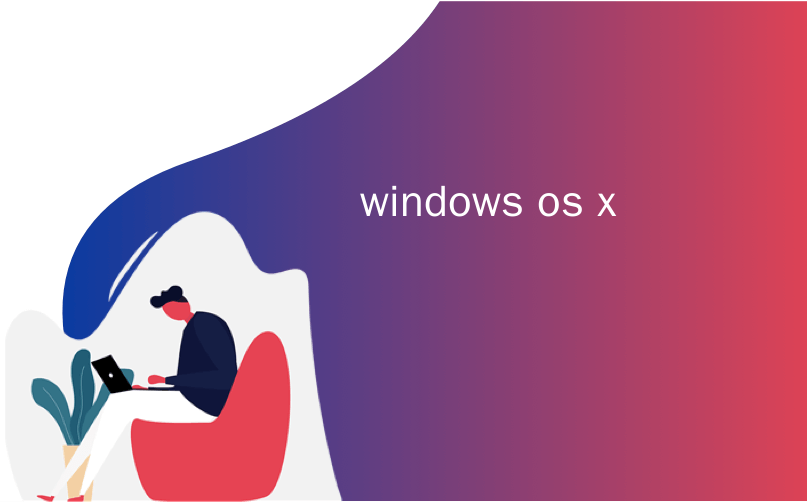
windows os x
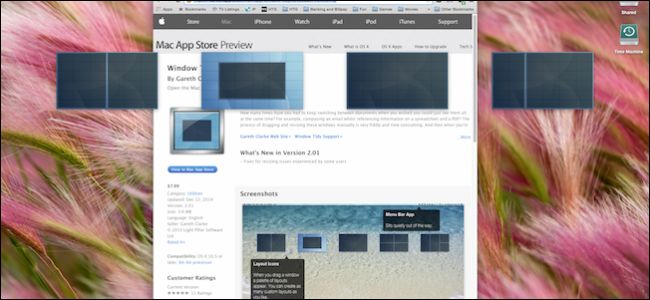
Apple’s recent announcement that the upcoming OS X release (El Capitan or 10.11) will finally, at long last, come with the ability to snap?windows to your screen edges. A feature?Windows users have enjoyed since 2009.
蘋果公司最近宣布即將發布的OS X版本(El Capitan或10.11)最終將終于具有將窗口捕捉到屏幕邊緣的功能。 自2009年以來,Windows用戶就喜歡使用此功能。
If you’re a Mac user who has no idea what we’re talking about, then let’s review. When Microsoft released Windows 7, it introduced its Snap feature, which lets?users simply grab and drag a window to a screen edge and “snap” it there.
如果您是不知道我們在說什么的Mac用戶,那么讓我們回顧一下。 當Microsoft發布Windows 7時,它引入了Snap功能,使用戶可以簡單地將窗口抓取并拖動到屏幕邊緣,然后在其中“捕捉”。
So for example, if you drag a window to the right edge, it will snap there and resize?to half the screen’s width. If you drag it to the top, it will snap there and expand to maximum.
因此,例如,如果將窗口拖動到右側邊緣,它將在此處對齊并調整為屏幕寬度的一半。 如果將其拖動到頂部,它將在此處捕捉并擴展到最大。
Apple has resisted?adding this feature, which may not matter much to Mac users who really don’t know what they’re missing, but may feel?curiously absent?for switchers and people who use both systems. This is set to change with the aforementioned El Capitan release, but for OS X users who can’t upgrade to 10.11, or simply want to have snap powers right now, we want to suggest a solution: Window Tidy.
蘋果公司拒絕添加此功能,這對于確實不知道自己缺少什么的Mac用戶而言可能并不重要,但對于切換器和使用這兩種系統的用戶可能會感到奇怪。 對于前面提到的El Capitan版本,這將發生變化,但是對于無法升級到10.11或僅想立即擁有快照功能的OS X用戶,我們想提出一個解決方案:Window Tidy。
超級充電 (Super Charged Snapping)
Window Tidy is an app available for download in the Mac App Store. It’s $7.99, which might seem like a lot for something that will be free in the next release but we think that the extra features really make the price a secondary consideration. Especially again, if you’re not on track or not planning on upgrading to El Capitan.
Window Tidy是可在Mac App Store中下載的應用程序。 它的價格為$ 7.99,對于在下一個版本中將免費提供的功能來說,可能看起來很多,但我們認為這些額外功能確實使價格成為了次要考慮因素。 尤其是如果您不按計劃進行或不計劃升級到El Capitan。

Windows Tidy comes with a menu bar icon that?provides quick controls as well as access to its?preferences.
Windows Tidy帶有一個菜單欄圖標,該菜單欄圖標提供快速控制以及對其首選項的訪問。
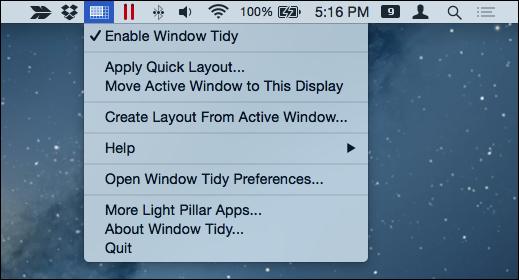
If you want to apply a “Quick Layout” for example, you’re able to draw out where and at what size you want to affect a selected window.
例如,如果要應用“快速布局”,則可以繪制出要影響選定窗口的位置和大小。
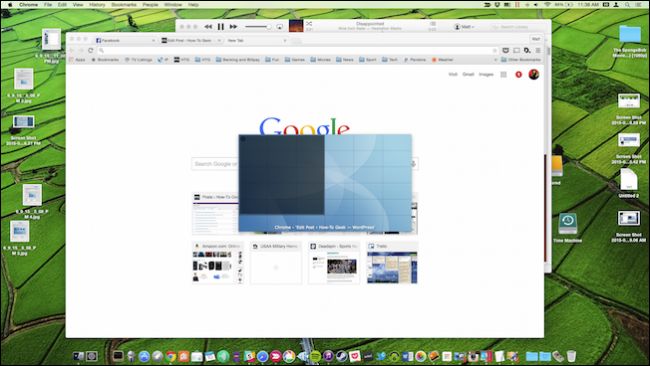
You can thus place windows precisely, at a?size that isn’t obtrusive?but still effective.
因此,您可以精確放置窗戶,其尺寸不會引人注目,但仍然有效。
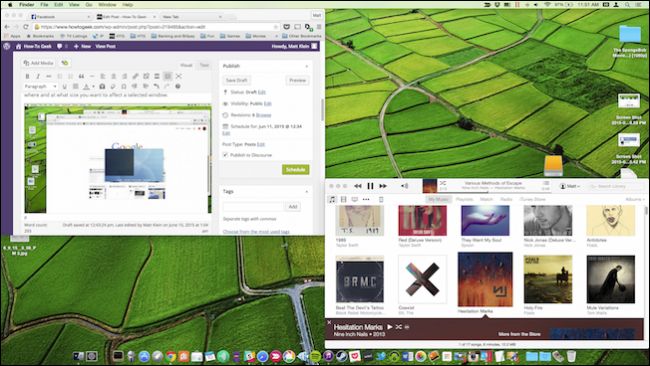
There’s also an option accessible from the menu bar that lets you move the active window to the current display, but this can already be accomplished using the “Command + #” keyboard shortcuts, which we’ve previously discussed.
您還可以從菜單欄中訪問一個選項,該選項可讓您將活動窗口移至當前顯示,但是已經可以使用前面討論過的“ Command +#”鍵盤快捷鍵來實現。
Snapping with Window Tidy is?accomplished by grabbing a window’s title bar. An overlay will then appear and you can drag a window to its?desired location and size.
通過抓取窗口的標題欄可以完成Window Tidy的抓取。 然后會出現一個疊加層,您可以將窗口拖動到所需的位置和大小。
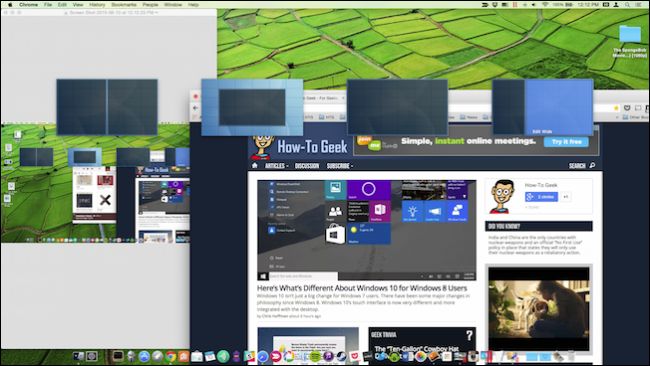
If you don’t want this overlay to appear every time you drag a window, you can change its behavior so that it only appears when you grab the title bar and hold the ever-useful “Option” key. This option can be enabled/disabled in the preferences.
如果您不想在每次拖動窗口時都顯示此覆蓋,則可以更改其行為,以便僅在抓住標題欄并按住有用的“ Option”鍵時才顯示。 可以在首選項中啟用/禁用此選項。
偏好設置的力量 (Power to the Preferences)
The Windows Tidy preferences have a lot of power contained within them. Let’s go through each tab and talk briefly about what?they do.
Windows Tidy首選項包含很多功能。 讓我們瀏覽每個選項卡,簡要討論它們的作用。
The first tab let’s you create and order layouts. Take a look at how ours is set up in the preferences and then in the next screenshot, how it looks when we activate the overlay.
第一個選項卡讓您創建和排序布局。 看看我們在首選項中的設置方式,然后在下一個屏幕截圖中,我們激活疊加層時的外觀如何。
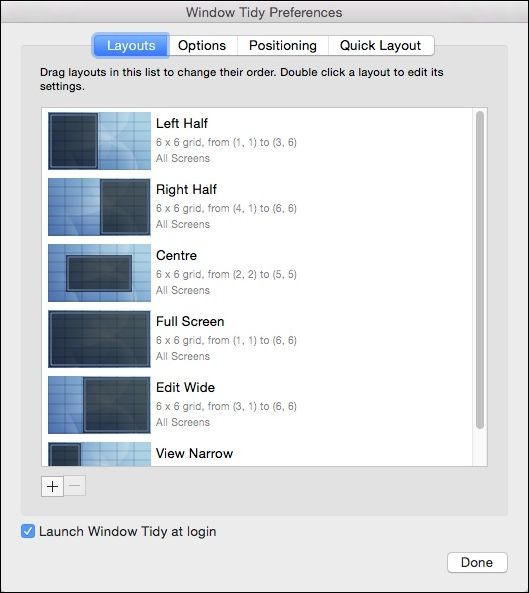
Your?overlay will appear as layouts are ordered in the preferences, so make sure that if you want something that will let you snap windows to the right and left edges, that each half is together in the layout order.
您的疊加層將按照首選項中的布局順序顯示,因此請確保如果您想要使窗口對齊到左右邊緣的東西,那么每個部分都按布局順序排列在一起。

You’re more than likely to spend most of your time in the Window Tidy preferences messing with layouts. Make sure you double-click on each one?if you want to really refine its behavior, size, and create?a quick activation shortcut. This is the kind of fine-grained control that adds considerable value to the app.
您很有可能會花費大部分時間在“窗口整潔”首選項中,以使布局混亂。 如果要真正優化其行為,大小并創建快速激活快捷方式,請確保雙擊每個。 這是一種細粒度的控件,可為應用程序增加可觀的價值。
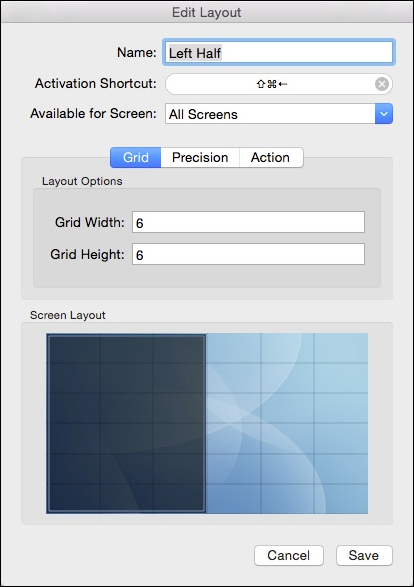
Next, the “Options” tab has many very useful items that you’re going to want to go through. Most of them are pretty self-explanatory.
接下來,“選項”選項卡包含許多非常有用的項目,您將要經歷這些項目。 其中大多數都是不言自明的。
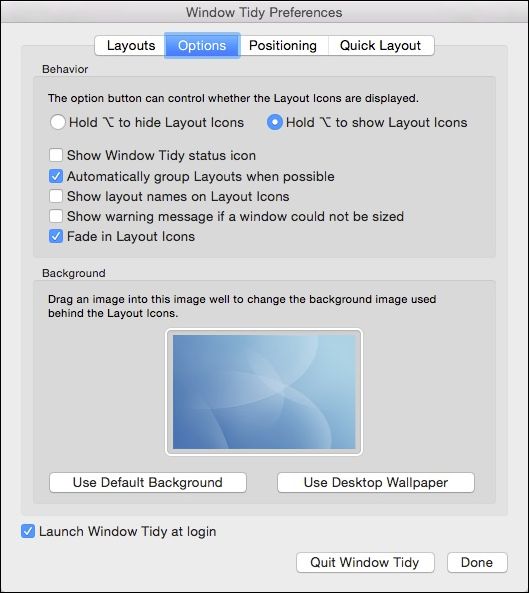
With?the “Positioning” tab, you can elect to arrange the layout icons horizontally or vertically, as well where they appear on the screen.
使用“定位”選項卡,您可以選擇水平或垂直排列布局圖標,以及它們在屏幕上的顯示位置。
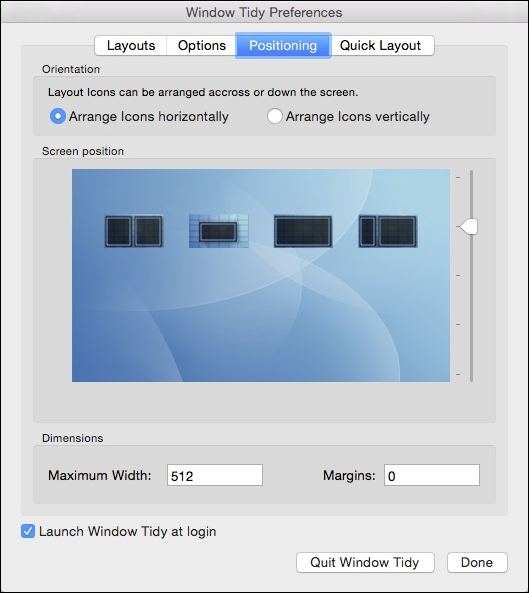
Finally, there’s a tab devoted solely to the “Quick Layout” feature we discussed earlier. Here we can assign a global shortcut key so you can access Quick Layouts without using the menu bar icon; change the Quick Layout overlay’s size and location; and alter its dimensions.
最后,有一個選項卡專門用于我們前面討論的“快速布局”功能。 在這里,我們可以分配一個全局快捷鍵,這樣您就可以在不使用菜單欄圖標的情況下訪問快速布局。 更改快速布局疊加層的大小和位置; 并更改其尺寸。
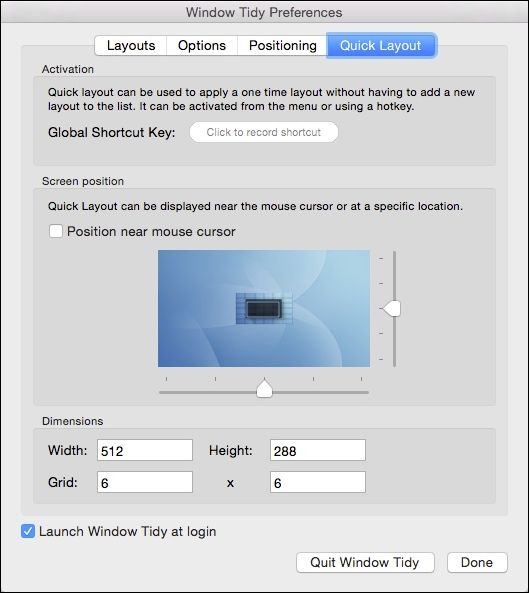
Regardless of whether you are a diehard Mac user, a longtime Windows user, or someone who jumps between the two operating systems on a regular basis, windows snapping is definitely a very useful feature.
無論您是Mac的頑固用戶,長期的Windows用戶,還是定期在兩種操作系統之間切換的人,Windows捕捉絕對是一項非常有用的功能。
No doubt the snap features that are being rolled out in the upcoming OS X release will be warmly received and widely used, but if you want this feature now, or you really want something that’s going to give you an almost extreme amount of control over the experience, then?we?recommend you consider Window Tidy for OS X.
毫無疑問,即將在OS X發行版中推出的快照功能將受到熱烈歡迎并得到廣泛使用,但是,如果您現在想要此功能,或者您確實想要某種功能,可以使您幾乎完全控制該功能。經驗豐富,那么我們建議您考慮OS X的Window Tidy 。
Let us know what you think. Do you as a Mac user find the idea of snapping windows useful?or is it just ho-hum? Sound off in our discussion forum?with your questions and comments.
讓我們知道您的想法。 作為Mac用戶,您覺得捕捉窗口的想法有用嗎? 在我們的討論區中暢所欲言,并提出您的問題和意見。
翻譯自: https://www.howtogeek.com/219465/how-to-get-windows-like-snapping-on-os-x/
windows os x






)

)










